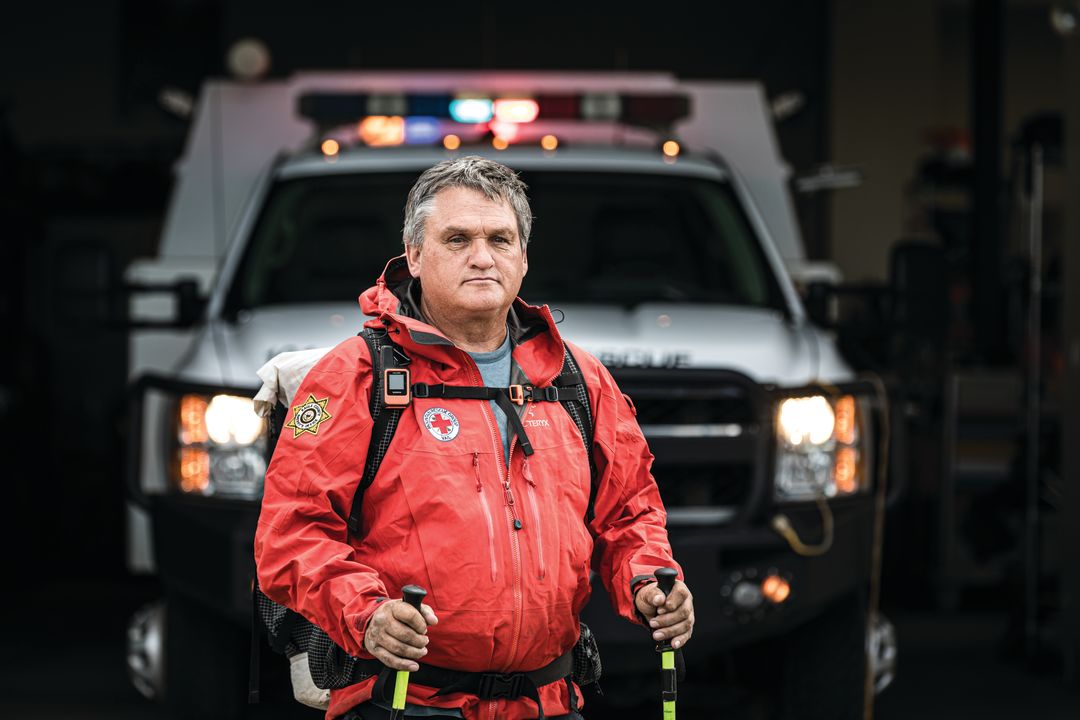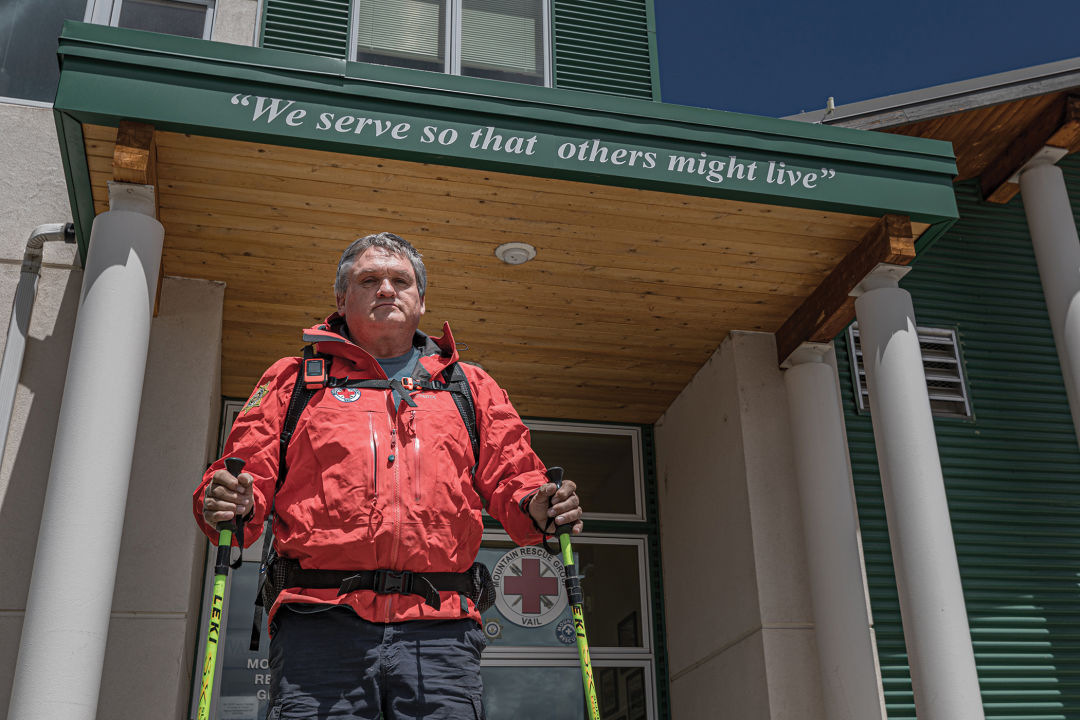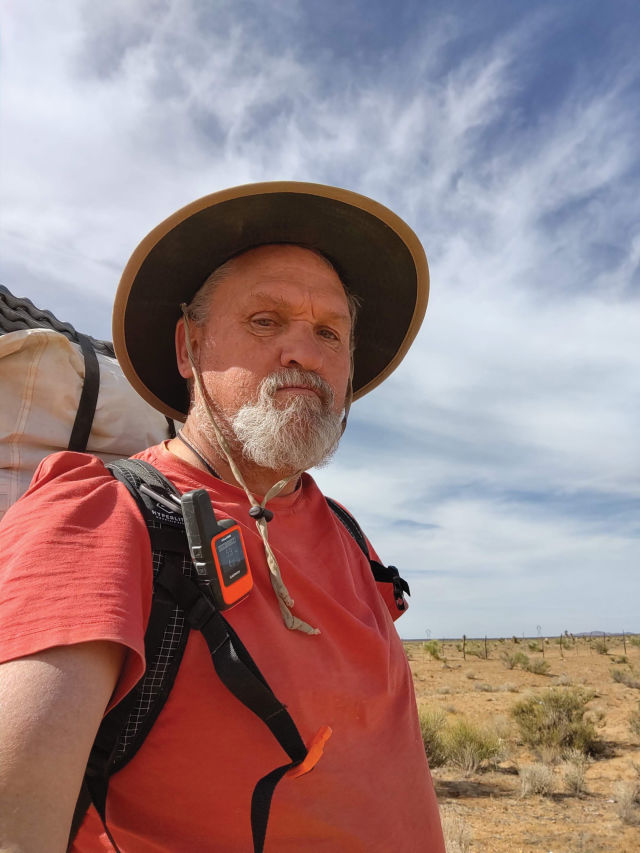Emotional Rescue for a Vail Mountain Rescue Group Veteran

SAR responder Scott Sutton
Image: Scott Bellow
My mental crash happened on December 10, 2019. I woke up that morning and thought, Today’s my last day. I was tired of what I call driving around the same roundabout.
I was a pretty high-level distance runner in college, then I got injured and wasn’t able to run anymore. That’s when my depression first started. I suppressed it, but I actually thought about committing suicide then. I was going to ride my bike onto a busy highway and hope a car hit me. Well, somebody stole my bike, so that didn’t happen.
I came home to Colorado Springs with my tail tucked between my legs and moved to Vail. I decided I would join Vail Mountain Rescue Group as a way to relieve some of that craziness in my mind and give back to my community. First responders give their time and their lives to help strangers, but if you don’t take care of your mental health, the things you see continue to build up, until one day you just crash. I always managed to stay just far enough ahead of it.
But on that morning in 2019, after having lost both my parents and my mentor, [VMRG cofounder] Tim Cochrane, over a span of six years, I just woke up and decided I was done with it. It didn’t matter how often someone said, “I’m here for you, reach out to me.” All you hear is the sound in your mind that says, “I want to get out of this. I’m tired of it.”
I was at home in Eagle, sitting on the edge of my bed, when I saw the Responder Alliance rescuer stress-injury card on the floor. I started reading it, and realized I was in the red, which is “critically injured” and includes symptoms of hopelessness and suicide ideation. So I reached out to a friend who’s a clinical psychologist, and he told me to go for a walk. I took an hourlong hike, then another later, and made it through each day for a couple weeks. As a result of that, I decided to take the summer off and hike the Pacific Crest Trail. Well, a few days before I left, Covid hit, so I postponed the hike until this summer and decided to do the Continental Divide Trail instead.

Sutton at Vail Mountain Rescue Group headquarters in Edwards
Image: Scott Bellow
I’m calling this project Walking Out of the Darkness (facebook.com/CDT2021), and it’s supported by Speak Up, Reach Out in Eagle County. The plan is to hike 17 to 20 miles a day and give talks to first responders along the way, with the ultimate goal to get stress-injury prevention added to our regular curriculum like first aid or CPR, any other upkeep of your medical training and well-being.
I’m at 83 body recoveries. The one that changed it for me was back in November of ’96, when a plane carrying five people crashed just south of Eagle. It was a guy from Vail and his girlfriend from Minnesota who’d come with her three daughters to visit for Thanksgiving. He decided that he would fly them home in a small plane, and he took off in a snowstorm and crashed on a hill. A couple other rescuers and I found the plane and crawled inside. I saw four burned bodies and assumed there was a fifth in there.
It wasn’t so much that that impacted me. But I drove a taxi at the time, and when I got back to the airport, the guys started telling me stories about how the girls were crying and didn’t want to get on the plane. That’s what affected me: hearing the backstory. Putting emotion into something that I didn’t want emotion to be a part of.
Any first responder has to develop a mechanism that allows you to build a box to put trauma in, so when you’re not accessing it, you have no emotional tie to it. From that point forward, I decided I’d treat fatalities like Annie dolls. That was my mechanism.
The problem was it didn’t allow me to grieve. Then, as my parents and Tim Cochrane passed away, the mechanism prevented me from grieving their deaths, too, because my mind wouldn’t allow me to accept it as that serious of an incident.
The solution is tricky. You have to maintain that box, but as an incident ends, historically we never did anything to end it. We’d talk about what happened, but then we all went home. In our minds, nothing said, “OK, you’re out of that mission and back in a safe place.” Units need to develop some sort of ritual that says, “It’s over.” As an example, one team gives out ice cream sandwiches after an incident. Another gives out pudding cups.
As a result of my deep depression in 2019, I gained almost 80 pounds and was only sleeping three nights a week. I’m in a much better place now. I took a leave of absence from the team starting in December to prepare for the CDT. I hope to return in some capacity, but time will tell. Right now, it’s healthier for me not to be a part of it and just to concentrate on this hike.

Sutton on the Continental Divide Trail near Silver City, New Mexico
Image: Courtesy Scott Sutton
In March, I started the trail at Crazy Cook Monument in New Mexico. I walked for 14 days, covering 185 miles before I fell and injured myself enough that I had to come back home for rehab. What I found out as I was walking was that I was using everything I had, and that even with all of the support I had, I didn’t have all the tools I needed to keep moving forward.
So while I’m here, I’m getting the professional help I need so I can keep going. My plan is to resume the hike in June, starting in Steamboat, head north for 1,500 miles, and reach the end by September. But that’s just the beginning, because my vision for Walking Out of the Darkness is that it will live on as a nonprofit, doing for first responders suffering from critical stress injury what the Wounded Warrior Project has done for combat veterans struggling with PTSD: give people hope.






































